14 Types of Black Birds in Maine (With Pictures)
Last Updated on
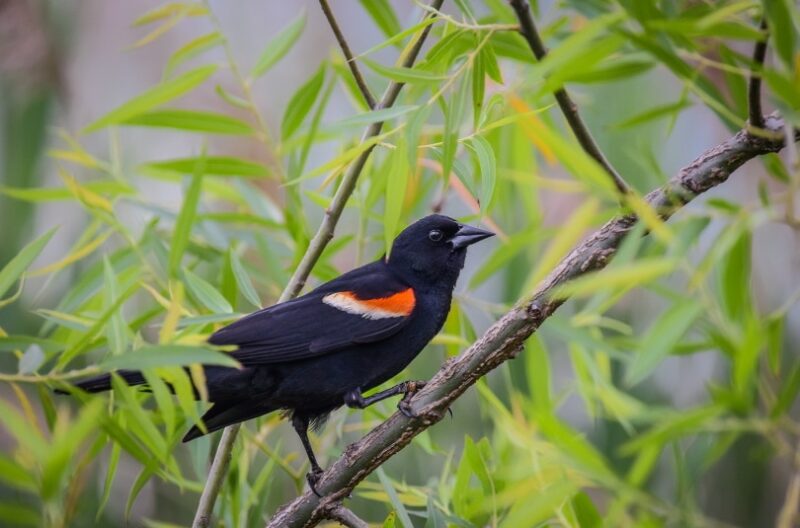
Maine is a state that people know for being a prime spot for sightseeing wildlife. There’s plenty to see, whether deep in the woods or on the rocky coast. Birds are no exception here, as there are copious species that call home this region. We’ll be covering 14 types of blackbirds in Maine, with details on their habitats, physical characteristics, behaviors, and much more. Oh, and don’t forget, we’ve got pictures to show you what they really look like.
Let’s get started!
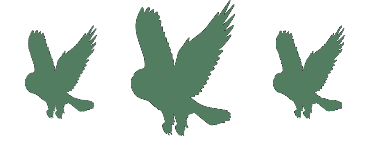
The 14 Types of Black Birds in Maine:
1. American Crow
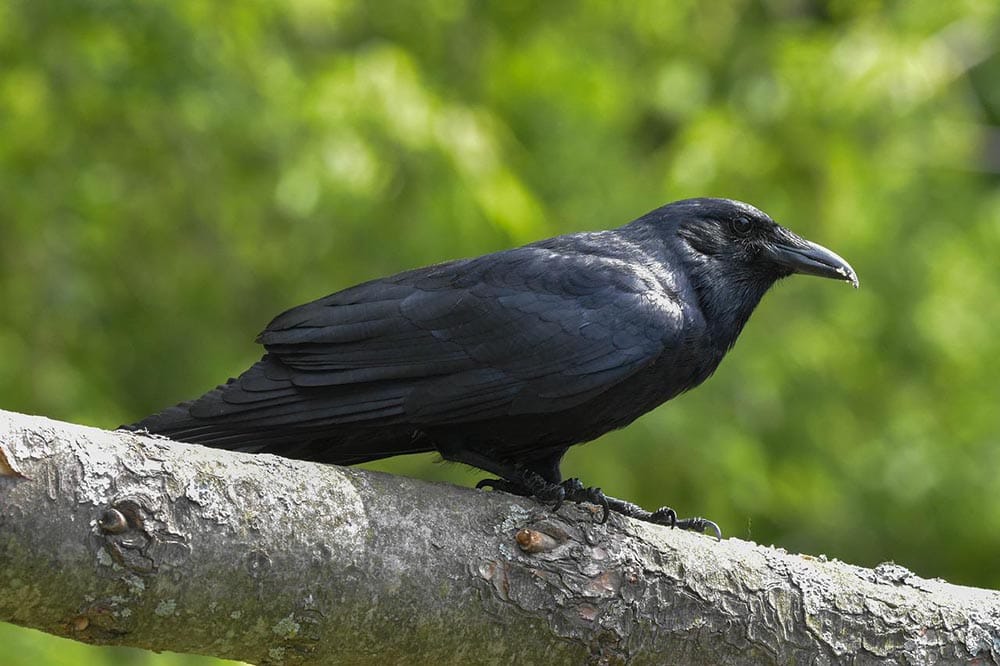
| Scientific name | Corvus brachyrhynchos |
| Family | Corvidae |
| Endangerment | Stable |
One of the most common blackbirds in Maine is the American crow. This iconic omnivore scavenges for whatever it can get its beak on and lives almost everywhere you can think of, whether rural or urban. Crows tend to circle the skies of dead animal carcasses before swooping in to steal their meal. You’ll hear them cawing and trotting on roadsides all the time. Physically speaking, the American crow is completely black, whereas most others on our list are only partially black.
2. Baltimore Oriole
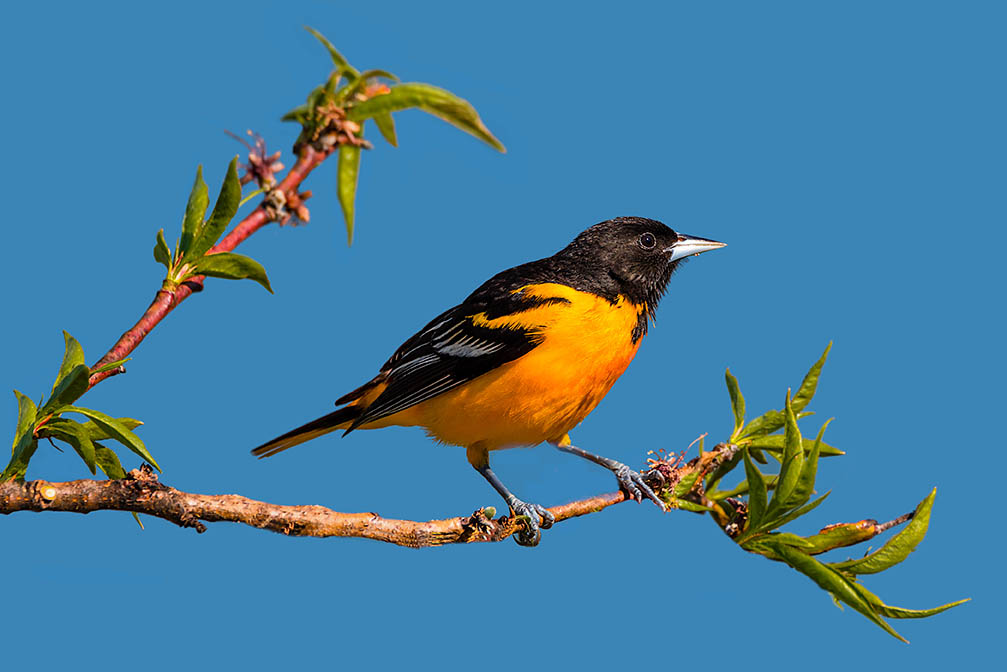
| Scientific name | Icterus galbula |
| Family | Icteridae |
| Endangerment | Stable |
Although the Baltimore oriole represents the state of Maryland more so than Maine, you can still find plenty of them here lurking in the dense forest treetops—particularly in the breeding season. The males of this species have a magnificent color scheme of orange and black, which can be picked out quite easily in the backyard. Orioles typically feast on insects that they forage for close to their tree nests but also enjoy consuming fruits and nectars.
3. Common Loon

| Scientific name | Gavia immer |
| Family | Gaviidae |
| Endangerment | Stable |
In a great number of Maine’s pristine ponds and lakes, you won’t be able to go without hearing the echoing loon calls during the night, which is evident in the summer months. You can see them during the dusk and dawn as well, diving below the water to hunt fish and pop up afterward. Despite their aquatic lifestyle, they still tend to lay their eggs on sandy beaches or hidden in tall grassy areas. The black and white patterns on the common loon are easy to identify, especially since it has a prominent black stripe on its neck. The head of a loon is completely black, contrasted with red eyes.
4. Red-Winged Blackbird
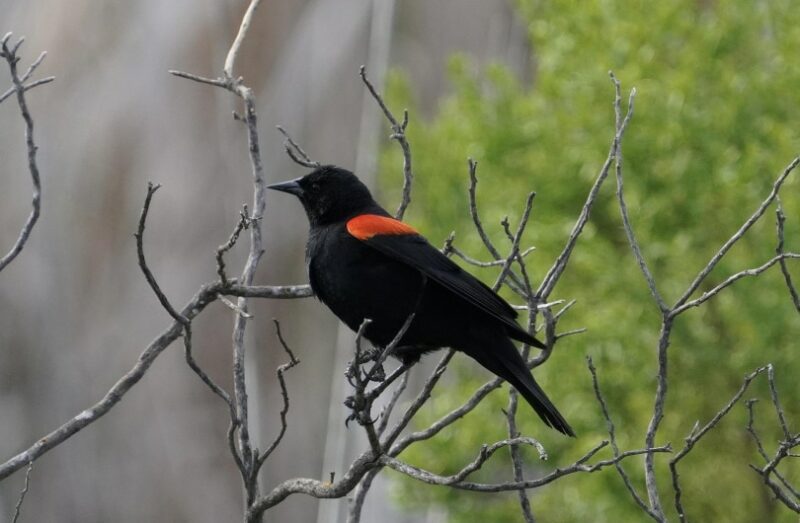
| Scientific name | Agelaius phoeniceus |
| Family | Icteridae |
| Endangerment | Stable |
Another easy bird to pick out from the crowd is the red-winged blackbird. As the name suggests, this species has red wings that pop out from its all-black body. You can also see a sliver of yellow underneath the reddish-orange wings. Red-winged blackbirds live in marshlands down in the shrubs feeding on insects, but you’ll frequently see them perched on cattails. In the majority of Maine, you’ll only find these birds during the breeding season. However, they can be found closer to the coast year-round.
5. Rusty Blackbird
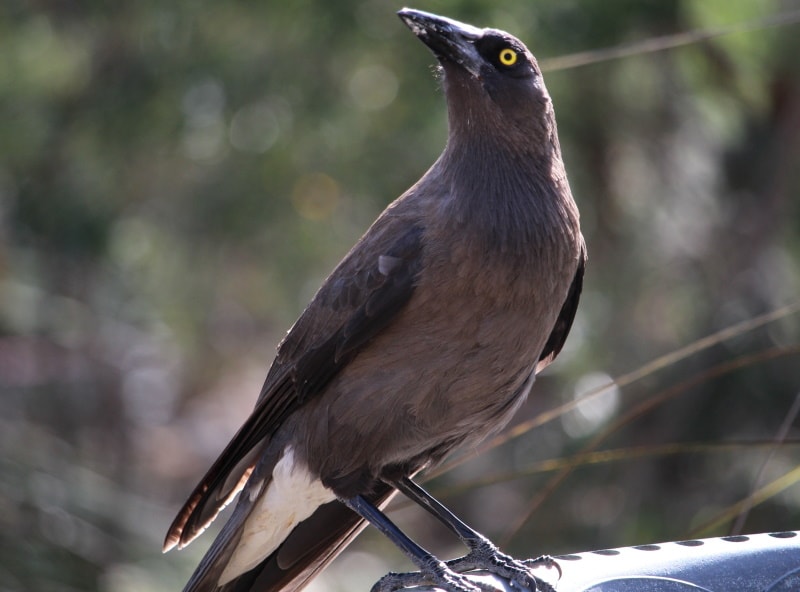
| Scientific name | Euphagus carolinus |
| Family | Icteridae |
| Endangerment | Unstable |
A lesser-known blackbird in the pine tree state is the rusty blackbird. Covered in a mixed pattern of black, gold, and brown colors, the rusty blackbird lives predominantly in the forests. This species is fond of insects and forages on the forest floor. These birds live in Maine during breeding season or to migrate down south, so you’ll only be able to catch them during certain times of the year.
6. Common Grackle
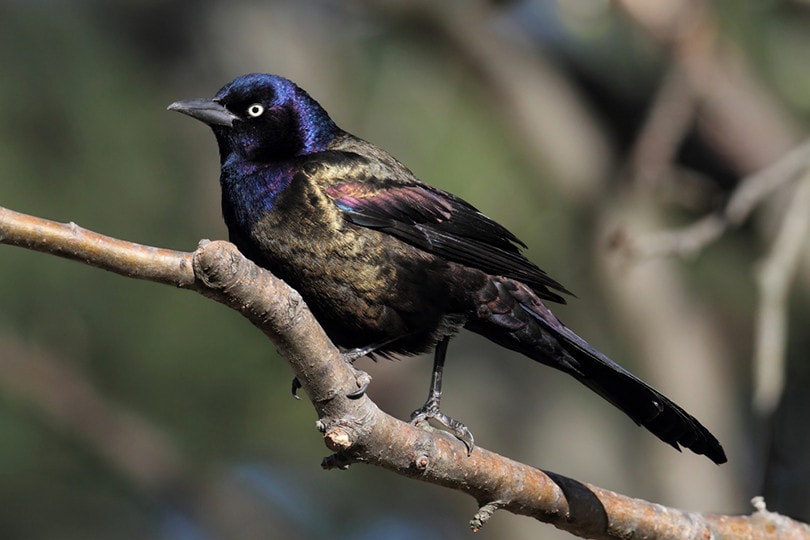
| Scientific name | Quiscalus quiscula |
| Family | Icteridae |
| Endangerment | Unstable |
The colors of the common grackle make them look as if they’ve been dipped into a pot of oil, with a flurry of blue, purple, gold, and black feathers. Though, its body is mostly black – which is especially the case for females. Similar to crows, they also scavenge for anything they can eat and live just about everywhere. Despite being an everyday bird seen throughout the northeast, grackles are losing quite a lot of their population.
7. Black Guillemot

| Scientific name | Cepphus grylle |
| Family | Alcidae |
| Endangerment | Stable |
Black guillemots are a species bound by the sea. They have a buoyant body that enables them to float effortlessly, and they tend to dive below the ocean surface to capture fish for food. This species nests high on coastal cliffs to protect itself from potential ocean predators. Like others in the Alcidae family, they only lay a single egg. The best time to go looking for black guillemot is during the spring or summer when they come out to enjoy the modest climate.
8. Brown-Headed Cowbird
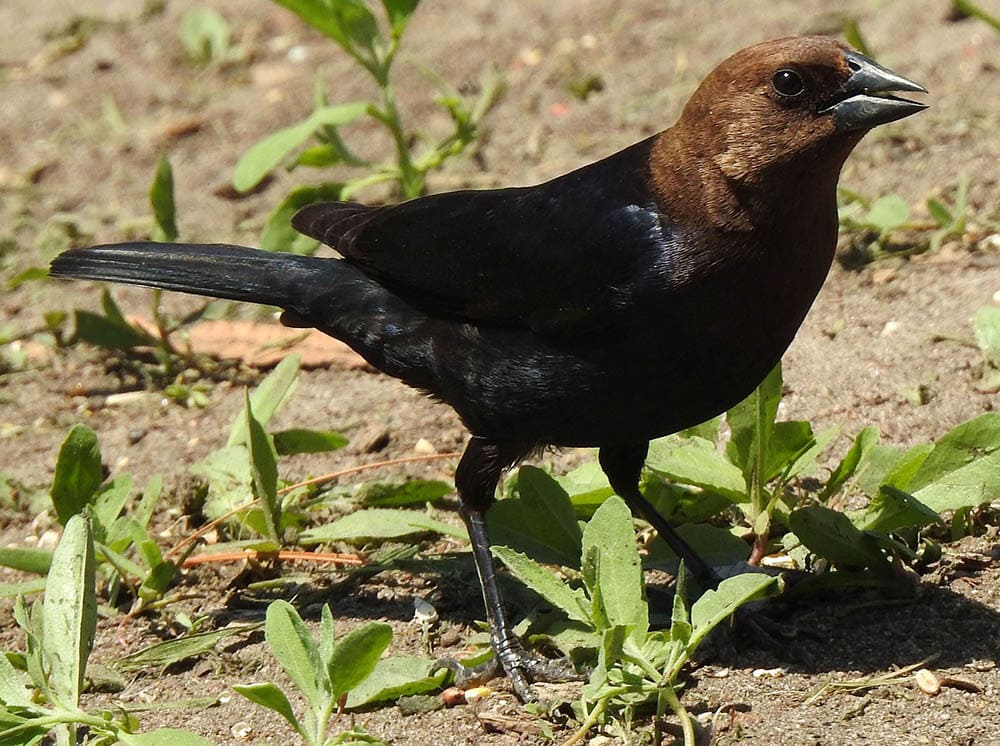
| Scientific name | Molothrus ater |
| Family | Icteridae |
| Endangerment | Stable |
In most of Maine’s land area, you’ll only be able to find the brown-headed cowbird during the mating season. However, those in the south close to New Hampshire may find them living year-round here. Even though they have a head covered in brown, most of their lower half is a shiny black color with some faint green hues. Females are mostly all brown, though. These catbirds live in grassy areas where they feed on a diet of seeds and other vegetation.
9. Black Scoter

| Scientific name | Melanitta americana |
| Family | Anatidae |
| Endangerment | Stable |
Black scoters are other oceanic birds that tend to dive deep underwater to find food. They feed on small crustaceans, ocean insects, larvae, and even some forms of vegetation. This species has almost entirely black plumage, excluding the striking orangey yellow knob above their bill. That is at least the case for males, whereas the females resemble the all-brown feather scheme of a common duck. The black scoter can be a challenge to find, as they only pass through the mainland during migration. However, your best luck is on the coast.
10. Black and White Warbler

| Scientific name | Mniotilta varia |
| Family | Parulidae |
| Endangerment | Stable |
Black and white warblers are small birds with a pattern that matches their name perfectly. They live in the dense forests of Maine during the breeding season and search for bugs and insects under tree bark. These warblers do live on the ground and lay their eggs here, but they are still easy to spot in trees because of their contrasty colors and constant vocalizations. Unfortunately, they may be aggressive towards other birds in their area, including black-capped chickadees, which we’ll be discussing in a bit.
11. Common Raven
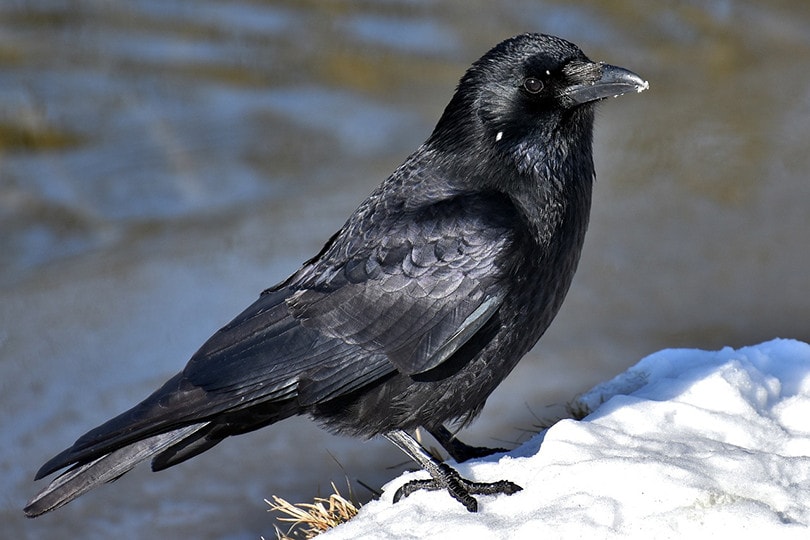
| Scientific name | Corvus corax |
| Family | Corvidae |
| Endangerment | Stable |
Sometimes confused with the American crow, ravens are a much larger bird with human-like vocals. They live in higher elevations or places with cliffs where they can make a large nest. Similar to other Corvidae members, ravens prefer to scavenge for food, mainly dead animal remains. You can find this species of bird at all times during the year, as they don’t have much trouble getting through the cold months.
12. Black Tern

| Scientific name | Chlidonias niger |
| Family | Laridae |
| Endangerment | Stable |
The black tern is a rare blackbird to find in Maine, and they can only be found in the southern region close to New Hampshire while migrating or in a strip in central Maine during mating periods. Unlike other birds on our list, this species catches its food in flight; flies, grasshoppers, and many other aerial bugs. The big advantage for them is that they already live in open grassy habitats with no obstacles to maneuver around. Black terns have a black head, but the rest is mostly a grayish tone.
13. Bobolink

| Scientific name | Dolichonyx oryzivorus |
| Family | Icteridae |
| Endangerment | Unstable |
Bobolinks might stand out because of their name, but they aren’t anything to dismiss. They have a migratory range that spans from the U.S to the center of South America, and they have lots of stamina when flying. As they live in grasslands, bobolinks forage and live close to the ground to scavenge for seeds. Unfortunately, the bobolink is a very difficult bird to find because of their decreasing population, and you’ll only find them in Maine during breeding periods.
14. Black-Capped Chickadee
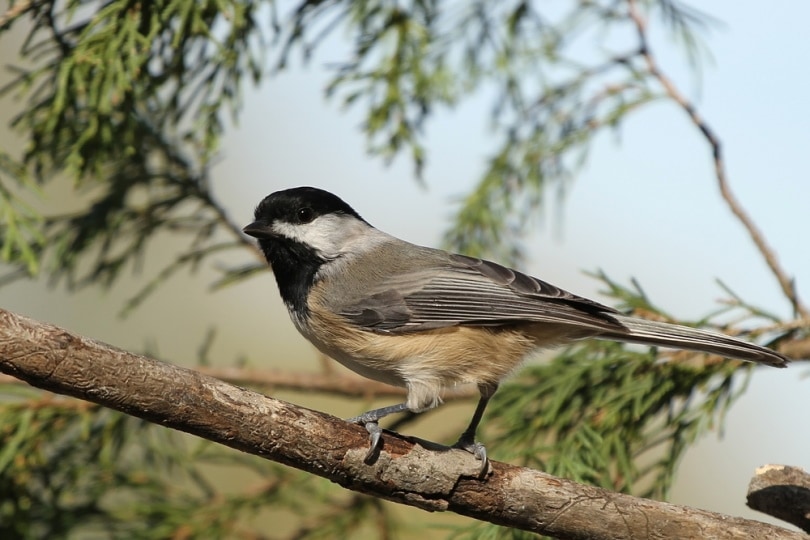
| Scientific name | Poecile atricapillus |
| Family | Paridae |
| Endangerment | Stable |
Last but not least, we couldn’t forget Maine’s own state bird, the black-capped chickadee. This species is an extremely common sight at the feeder, and their “chickadee-dee-dee” call is heard throughout most households in this region. They may be confused with the white-breasted nuthatch, although the chickadee is a bit smaller and behaves differently. Chickadees live in forests and are generally tame around humans.

Conclusion
There’s no shortage of blackbirds in Maine, as the state holds more than a dozen of the variety. Whether you’re on the beautiful rocky coast, on the main road, or in the coniferous forests, you’ll be able to find something. We hope you enjoyed our list of 14 types of blackbirds in Maine. Happy birdwatching!
Featured Image Credit: Ryan Panfil, Pixabay
Table of Contents
About the Author Robert Sparks
Robert’s obsession with all things optical started early in life, when his optician father would bring home prototypes for Robert to play with. Nowadays, Robert is dedicated to helping others find the right optics for their needs. His hobbies include astronomy, astrophysics, and model building. Originally from Newark, NJ, he resides in Santa Fe, New Mexico, where the nighttime skies are filled with glittering stars.
Related Articles:
Monocular vs Telescope: Differences Explained (With Pictures)
10 Types of Hummingbirds in Arkansas (With Pictures)
8 Types of Hummingbirds in Nebraska (With Pictures)
5 Types of Hummingbirds in Idaho (With Pictures)
3 Types of Hummingbirds in Mississippi (With Pictures)
8 Types of Hummingbirds in Kansas (With Pictures)
5 Types of Hummingbirds in West Virginia (With Pictures)
5 Types of Hummingbirds in Ohio (With Pictures)
